
We found this beauty when we were weeding the mulch under the jungle gym. A fascinating science project to see how an acorn sprouts into a mighty oak.
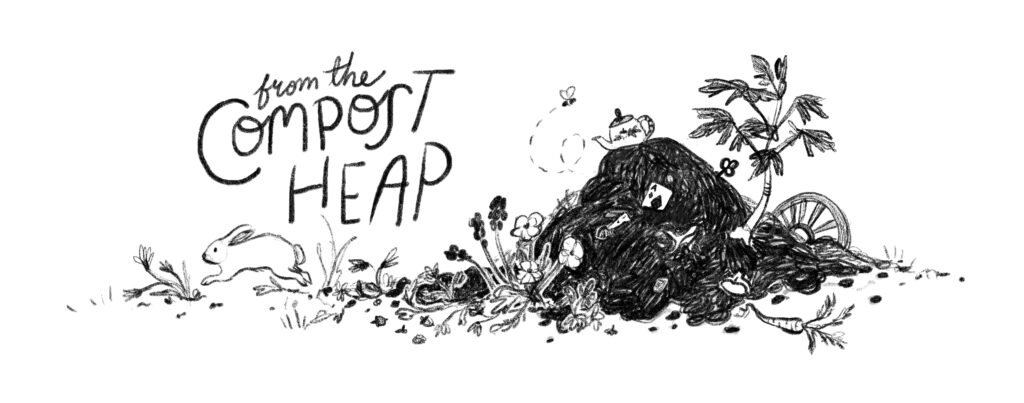

We found this beauty when we were weeding the mulch under the jungle gym. A fascinating science project to see how an acorn sprouts into a mighty oak.
Growing up I had no idea I was autistic.
I was an early talker, a self taught reader, and my social differences were percieved as “shy.”
Flash forward thirty years and I am learning so much about myself alongside my autistic child. For one thing, our brains process language completely differently than neurotypicals.
If you want to do a deep dive into language development I suggest starting with Alexandria Zachos of Meaningful Speech. She has a lot of free resources on her blog and Instagram.
While I was learning to support my child’s speech development I had some big epiphanies about my own use of language and specifically why I struggled with Spanish classes in university.
This is why most babies point at objects to learn their names. They learn a bunch of single words and eventually use them like building blocks to make sentences.
I’m thinking of the times in class we would recite conjugations – as if that was at all useful outside the context of a sentence. 🫠
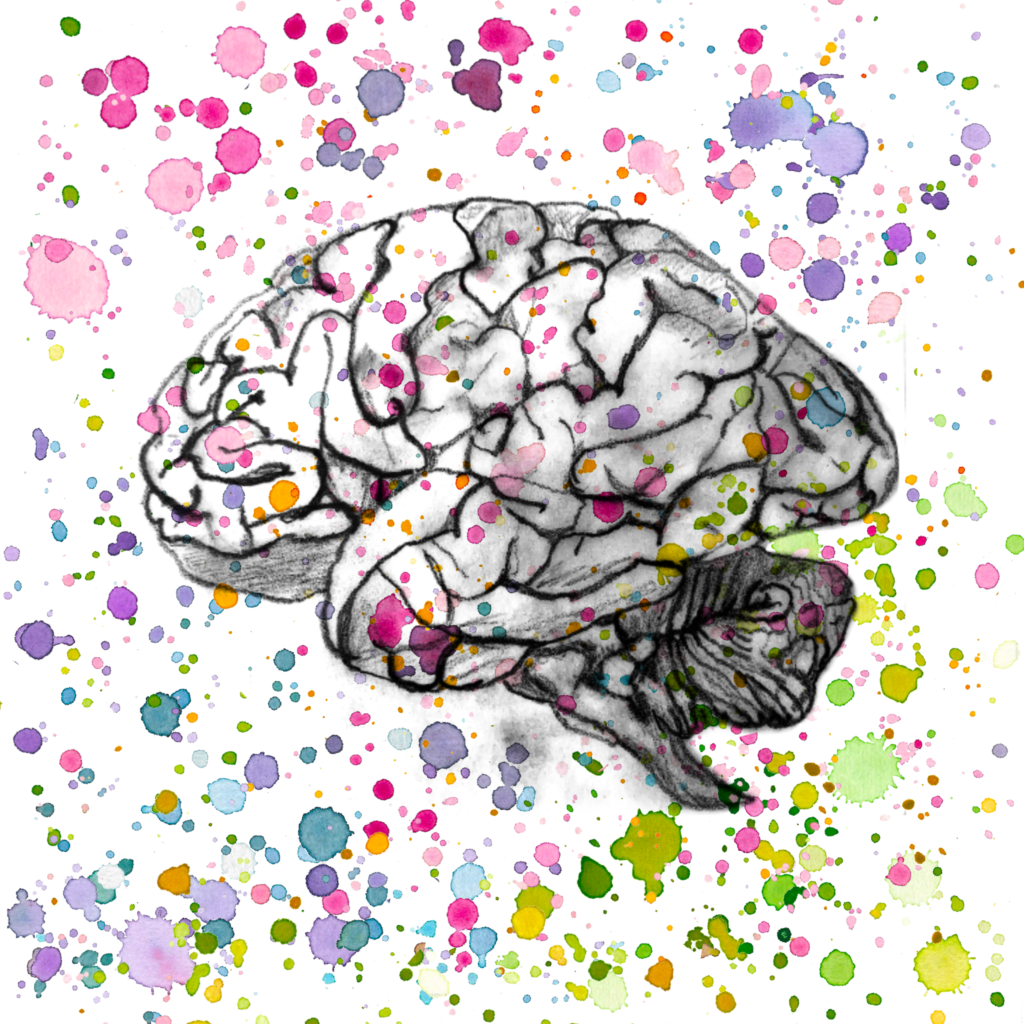
Our natural language progression is to pick up phrases or sentences like shiny objects.
Bonus points for musicality, expression, or relating to our interests.
Once we have enough chunks we naturally start to mix and match.
Now we know why traditional curriculum aren’t going to work for us.
So what do we do instead?
Learning individual words is not helpful for gestalt language processors.
We need to see them in action.
Even if you find a curriculum that does this, you’re still going to need to supplement it to really engage a neurodivergent student.
Because we’re picking up on the whole language gestalt – including intonation.
Google AI is not the way forward here.
This doesn’t mean you need a private tutor, but whatever you are watching or listening to should be a real human who is a native speaker of the language you are learning.
We’re incredibly lucky to live in a time where our favorite TV shows are probably dubbed over in multiple languages. Here’s the secret sauce where you engage with your student about whatever they are most passionate about.
We are currently loving the Spanish dubs of Numberblocks on Netflix. (My kid literally falls asleep listening to the soundtrack – which is also available in Spanish!)
I find that it’s easier to pick up on language if you’re watching shows that are made for emerging speakers (toddlers). Vocabulary is simpler and the speed of speech is (usually) slower.
But we also love watching Totoro in Japanese.
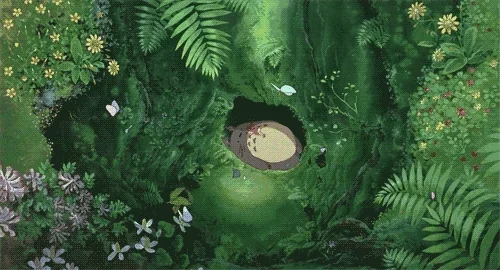
There’s something to be said for the immersion of watching something you love. Before my child was fluent in English he was singing the theme song to Totoro in Japanese.
Sometimes it’s about what speaks to your heart.
Our brains engage with music on a different level than spoken language. Sometimes neurodivergent folks even sing before speaking.
99% of what I do remember from Spanish class was from songs.
There are so many YouTube channels for songs.
Super Simple Songs has translations for Spanish, Japanese, and Portuguese.
Just search for children’s songs in whatever language you want to learn.
Or jump in the deep end and try translating a pop song. I did this for Kudai’s Quiero after studying abroad in Mexico. It’s twenty years later and I still know it by heart.
Not all neurodivergent folks struggle with auditory processing, but plenty of us do. Sometimes I can’t “hear” sounds unless I see them.
If you’re watching a show or YouTube channel look at your options for captions. Captions in the native language are really helpful. But sometimes they do differ from the recorded audio so you have to watch out for that. (This is always the case even with English.) Or English captions can help with understanding the context.
Another great tool for students who need to see to hear is AAC.
David already had the Proloquo2Go app as a support for communicating in English. He hasn’t used his AAC in months so I set up a second user in Spanish. (I’m sure there’s a way to set up a bilingual user too.)
It looks like this. When you tap the word the tablet speaks it.
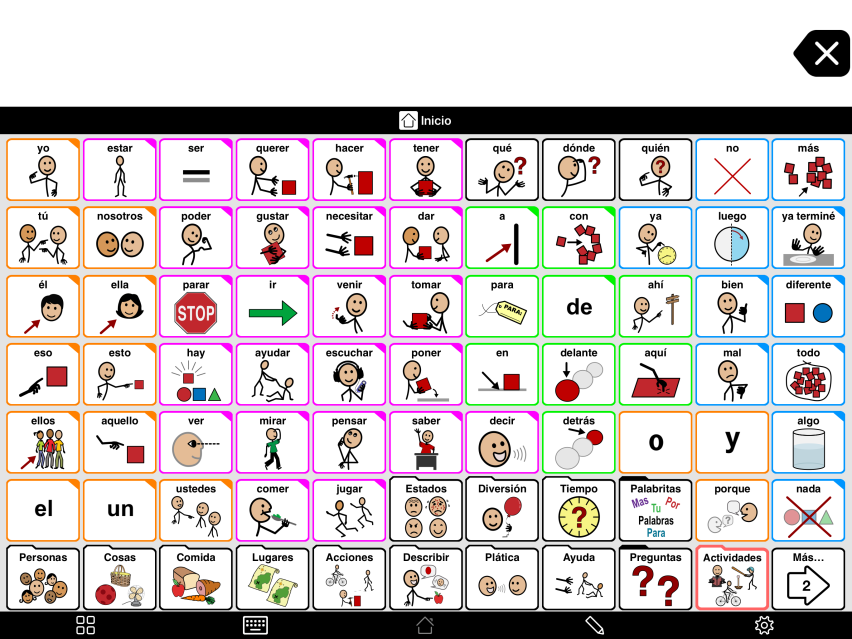
I wish this app were not so expensive.
But language curriculum is also quite an investment. I wanted to mention this because it is such a powerful tool. Since we already have it – using it for a second language is an exciting way to put that investment to good use.
I started with a template for an emerging speaker and then customized folders with phrases from Numberblocks.
It’s really important to put in phrases for our neurodivergent kids in addition to the single words that come preloaded.
I’ll probably write a second post specifically about how we use this.
The caveat is that AAC tablets are not very expressive. This is like a speaking dictionary, but it will not teach you the natural musicality of a language. You still need a native speaker (in real life, recordings, TV, or YouTube) to model language. This is a tool for making that material accessible.
I love bilingual books with two languages printed side by side.
But I learned the hard way to look for books that are for “early readers” versus classic favorites.
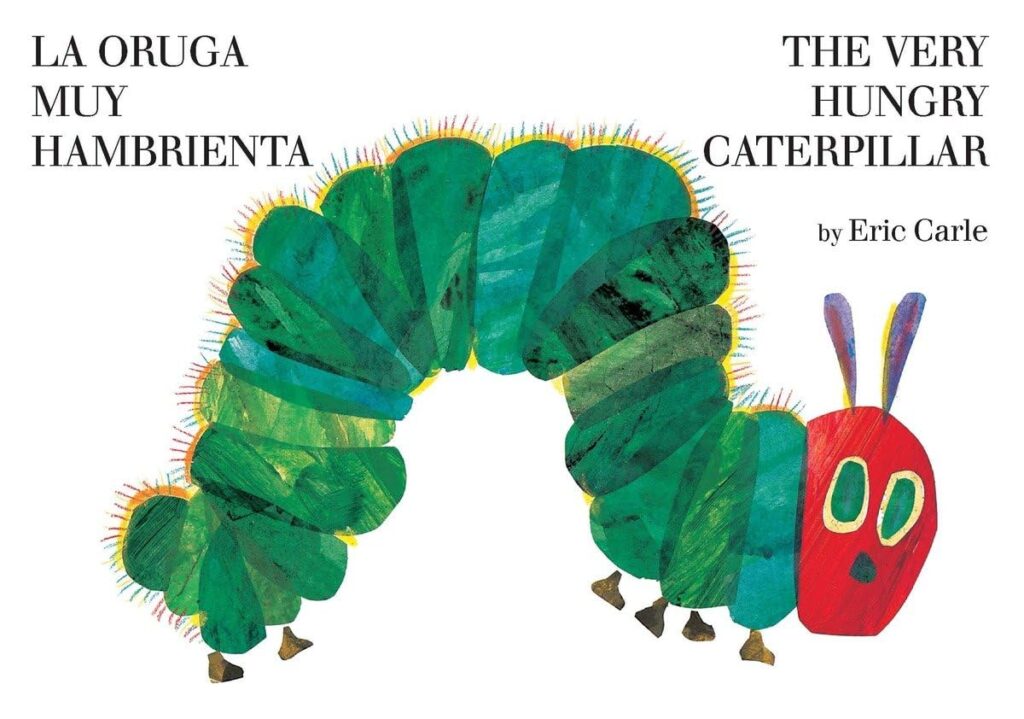
La oruga muy hambrienta is a mouthful.
While I didn’t learn much conversational Spanish during my time studying abroad, I am fairly confident at sight reading words. (It helps that the sounds in Spanish are very consistent versus what we’re used to in English.)
If you’re not comfortable reading aloud yourself (yet) try audiobooks!
But it’s also okay to be imperfect and make mistakes while you are learning. It’s all part of the process. If you’re a parent reading with a kid – seeing you make mistakes and correct yourself can be a good life lesson.
Once you have phrases use them in your daily life.
Weave in what you’ve learned with your family or a friend group. My little extrovert is already having short conversations with native Spanish speakers in our area.
Follow his lead and look for opportunities to practice and learn in community.
Try simple games in another language. Learn the phrases needed for a card game. Play “I spy” or charades. Put the words you’ve learned to good use.
You may even find video games or apps with multiple languages. Toddler apps are designed for emergent speakers (we love Eric Carle’s), but they do tend to focus on words versus phrases. If you’re picking up individual words (numbers, colors, nouns) try to learn phrases too so the words don’t get “stuck.”
I’m Sarah Shotts, late diagnosed autistic artist, writer, and mum to an autistic child who I’m home educating.
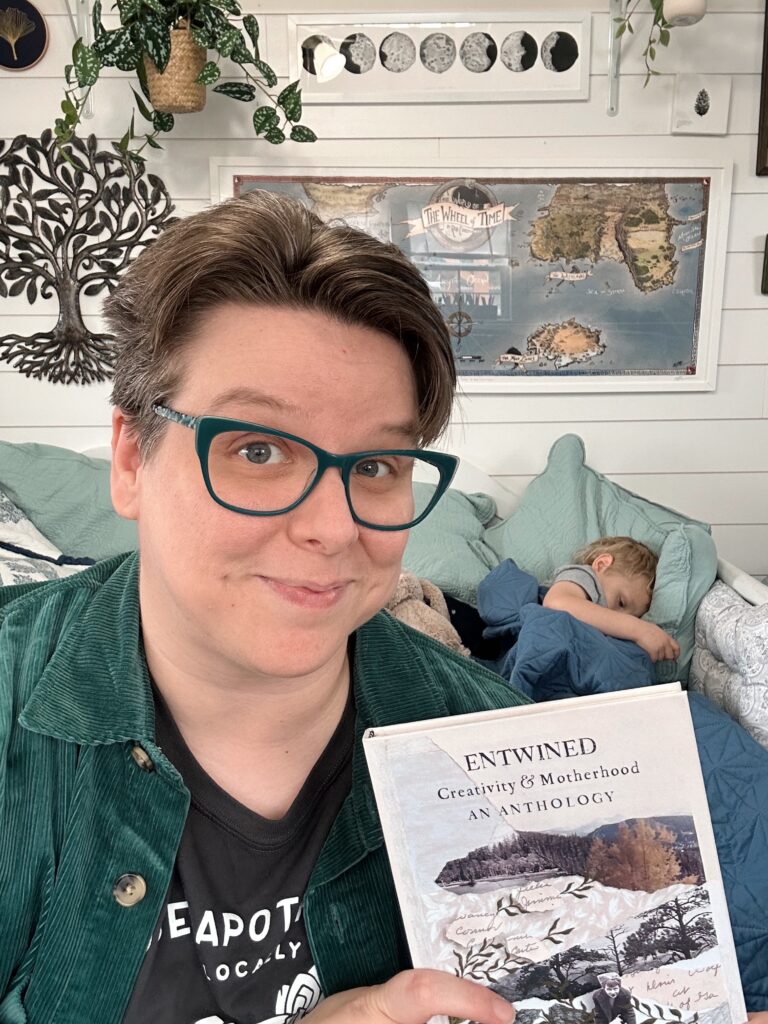
I write eclectic emails each month about creativity, neurodivergence, and (quite frankly) whatever my current hyperfixation happens to be.
Sign up here if you’d like monthly-ish emails.

Thank you YouTube algorithm. This was a hit.
The whole channel is full of great art lessons.
Drawing a skeleton after reading about bones.
I’ve spent a lot of creative energy on a home education rhythm that provides freedom within structure and so I thought I’d document it here.
DISCLAIMER: Please don’t read this post as a how to. I’m not making any suggestions or judgements for families who do things differently. Every child has their own needs and there are endless ways to home educate. This is what works for us. For now. It may change tomorrow.
Here’s a peek at our daily rhythms (watercolor clip art from Etsy).
This list is specifically curated to be things David can do after breakfast without my help. These suggestions are relatively quiet and not overstimulating as I do my morning journaling and write in my journal. Five years into parenting and I’m finally back to Julia Cameron’s morning pages.
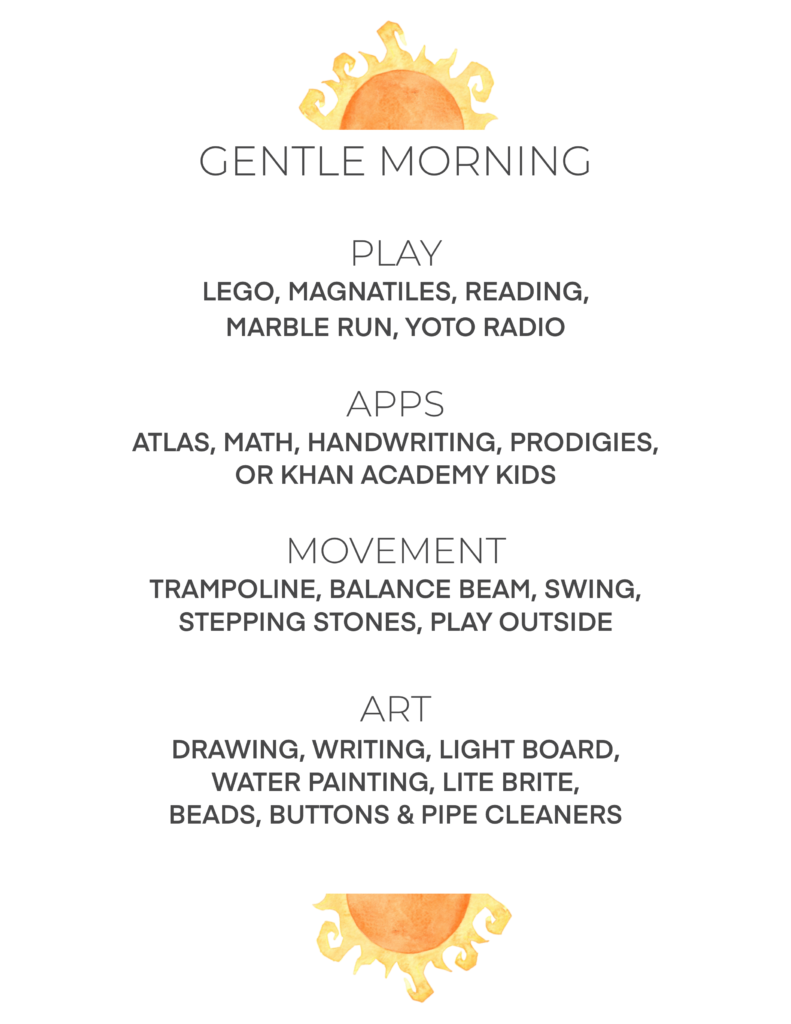
David is an early reader so these lists work well for us. At earlier ages I used a lot more pictures. He’s not limited to this list, but it can provide a reminder of what’s possible. After the holidays he spent hours sorting sequins and buttons. It was clearly very regulating and creatively fulfilling activity. He’s only just circled back to LEGO.
Sometime mid morning we’ll find our way to the proper “school” activities. Just as he is learning to respect my work (he calls my morning journaling my “handwriting”) I respect the work he is doing. Whether it is playing with LEGO or “making an invention.” We don’t start our day by the clock.
When a child is focused on a work it is important to them.
In the case of an autistic child it may also be fulfilling complex needs that are not immediately obvious.
(It’s me. I was the autistic child who’s now an autistic parent.)
Instead of suppressing neurodivergent instincts to move, to stim, to dance, to echo, to hyperfocus…
What if we really listened to our own bodies & capacities?
What if we trusted ourselves & our kids more?
Self advocacy means having autonomy to meet your own needs and pursue your own interests. That means our days are flexible and play blends into learning.
To be clear (because someone always says it) this doesn’t mean David does “what he wants” all day long.
Following the child doesn’t mean complete anarchy.
Stay with me.
The central tenant of our home education practice is freedom within structure.
We have certain types of schoolwork that we do each day.
Within that framework David has a lot of freedom.
What emerges is a natural ebb and flow to the day. Periods of concentration and then self regulation. Handwriting then jumping on the trampoline. Math then LEGO.
I don’t mean to suggest that it’s always easy. But when we find our rhythm and everyone is well regulated there is an ease to our day.
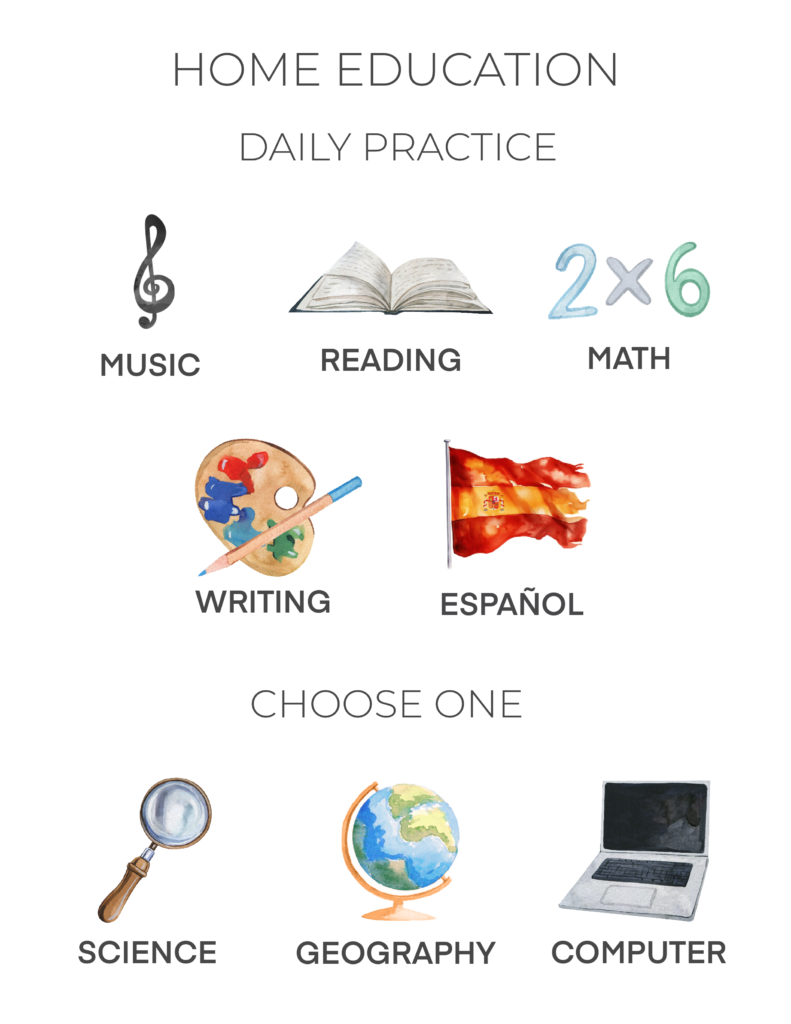
This semester we’ve shifted Music and Español to daily (instead of weekly). I also added computer because it’s required for testing and we’re preparing for that. But we won’t be doing that every day.
Art isn’t on the list because mark making (writing and drawing) are seen as the same thing for right now. Some days we draw letters. Some days we draw numbers. Some days we draw shapes. One day for “handwriting” we drew these nested rainbow hearts together. Parallel play is a really powerful support tool.
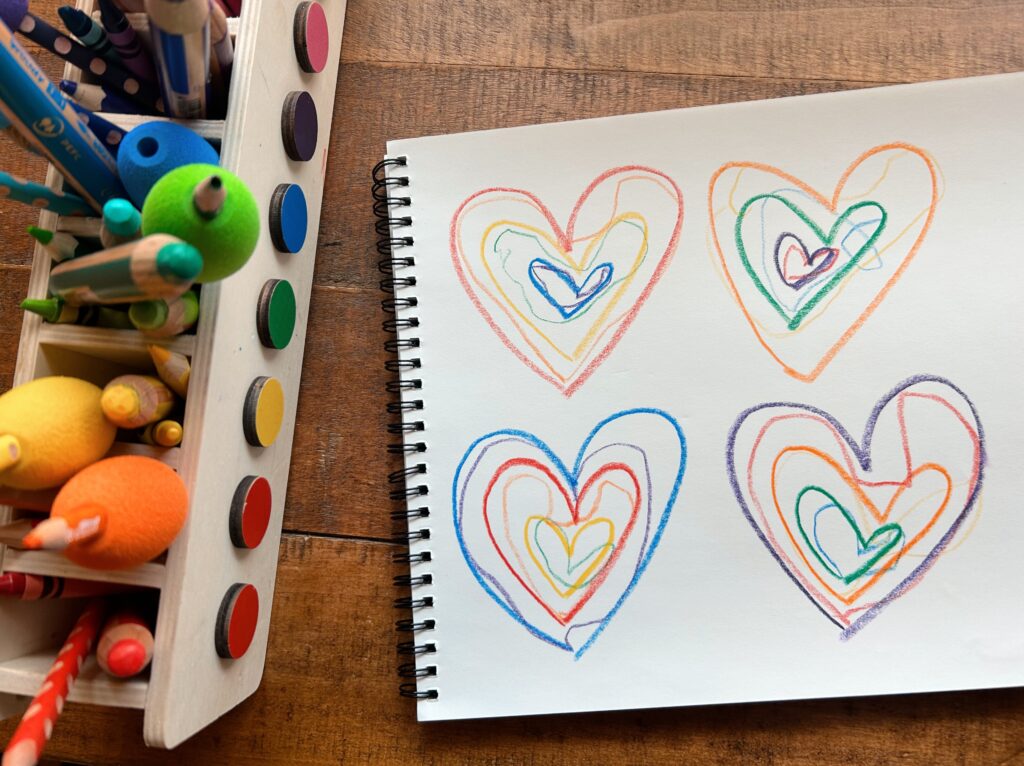
Another opportunity for choice is how we do math or reading or handwriting. I made this list so David can choose between a handful of ways to engage with each subject.
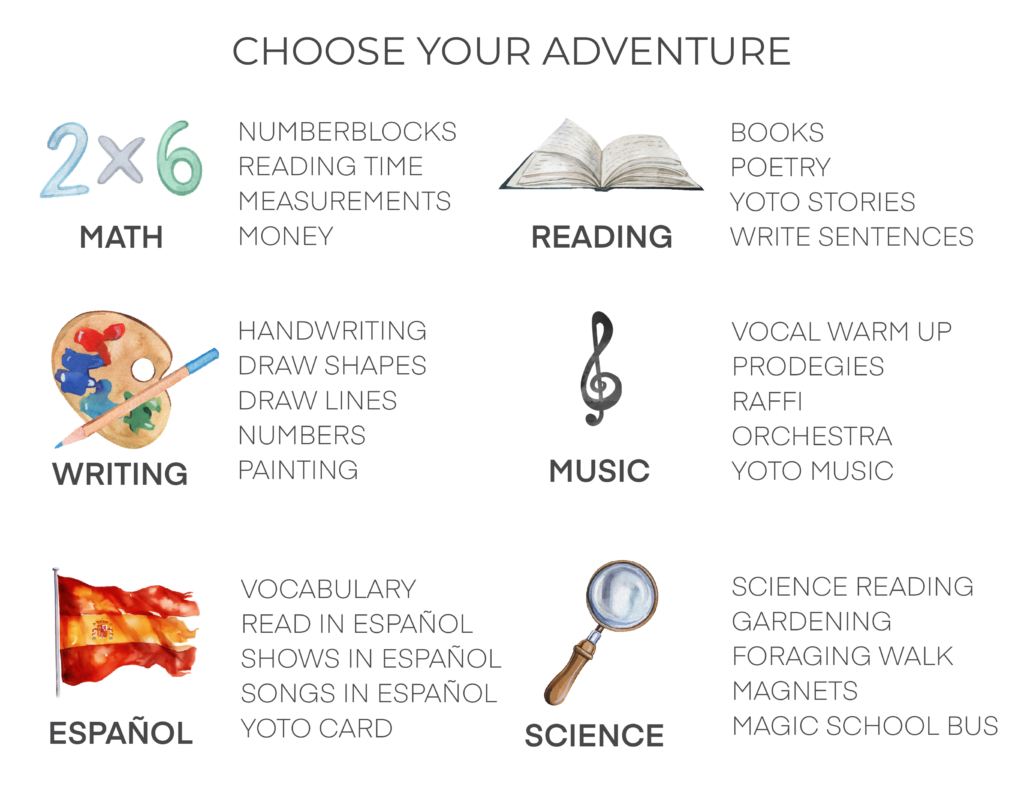
We’re still finding our cadence with this. There are enough options we can mix things up by choosing something new each day. Or avoid repeating what we did yesterday. Our list is laminated so we can keep track.
I believe this approach (freedom within structure) encourages self directed learning that can continue throughout life. Education should kindle our interests and curiosity.
My own home education was similar. My mom was very hands on in elementary, but as I got older I was completely self directed. And I just never stopped learning. I wasn’t doing it because I had to. I was doing it because I love to learn. By the time I got to university my professors just laughed because I took electives that “didn’t count for anything.” 😂
We also have an afternoon list of activities he can do any time after lunch. These are often sensory reset breaks between the more structured “school work” above.
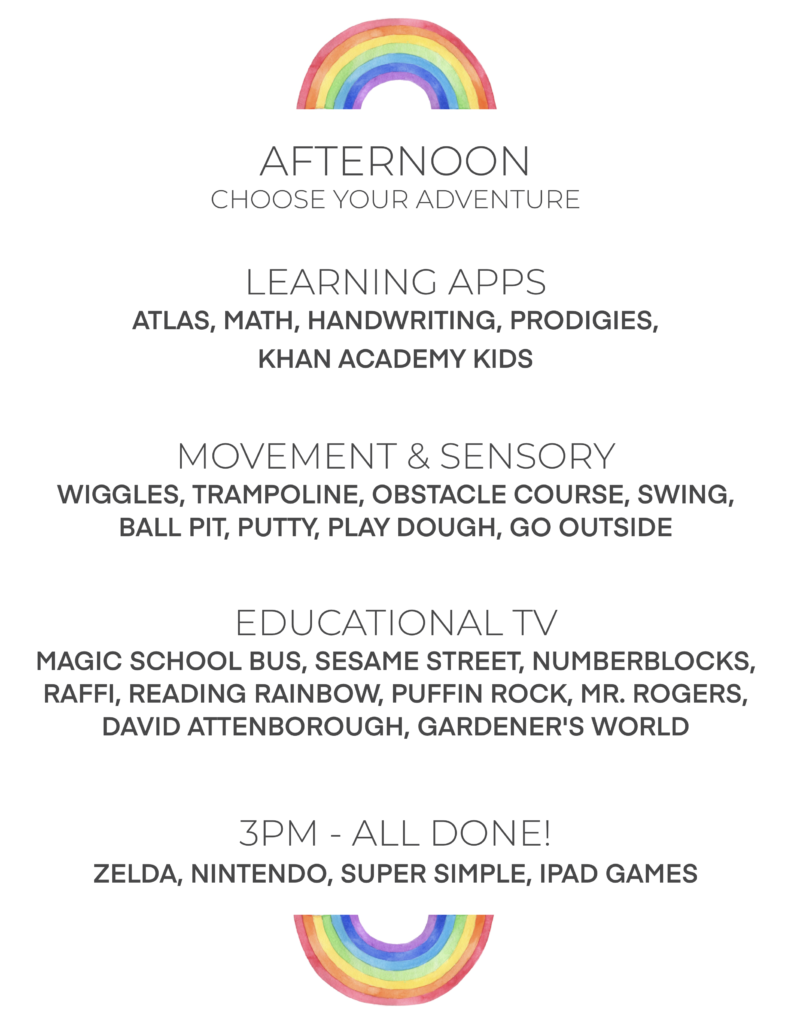
The goal is to be completely done with schoolwork before 3pm. That’s the time of day David is allowed to play Zelda (otherwise he would choose Zelda 24/7). Right now that is proving a strong enough motivation for him to persevere on the tough days.
This is how we’re navigating the tension of structure and freedom. But there’s a lot more to how we home educate. Sensory supports, field trips, gardening, baking, nature walks.
I’ve created a landing page for home education that you can browse here.
Or take a peek at our home brew curriculum.
Foraging walks are our new favorite. 🍂
Foraging walk.
Painting autumnal leaves for fine motor and art lessons this week. 🍁
A record of the books and resources we are using for home education.
We didn’t buy everything at once, but have been collecting resources gradually.
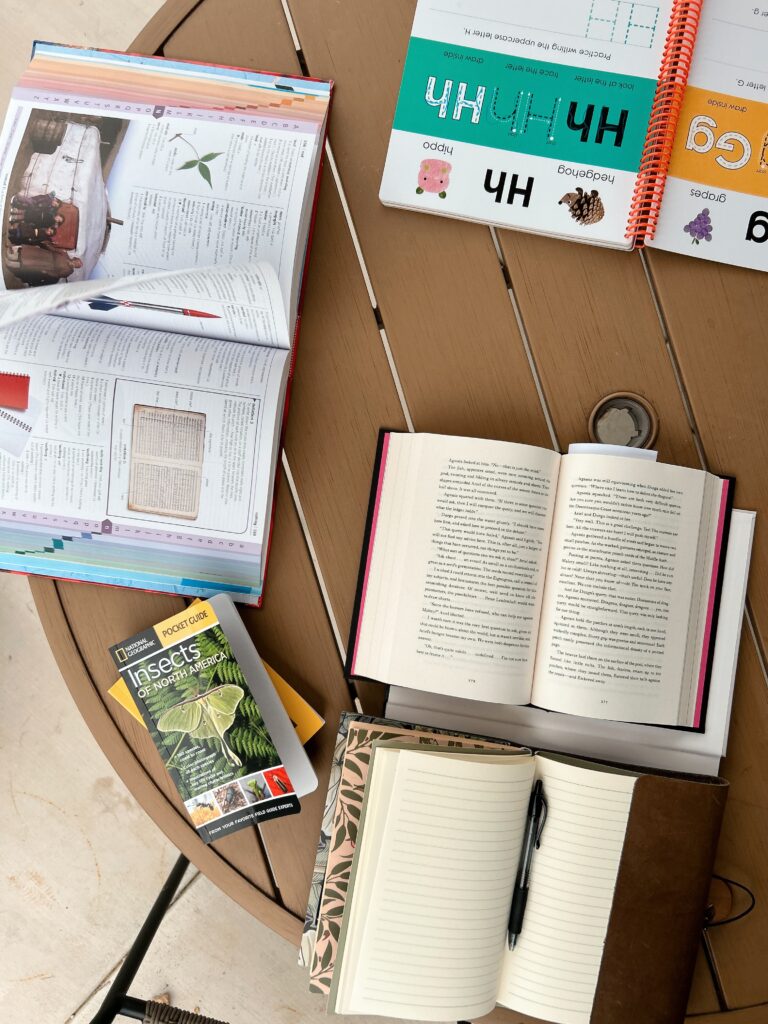
All of the links you’ll find here point to Bookshop.org. This is a cool bookshop where online orders can support your local bookstore. (Yes, yours!)
My intention is to give you all the information you need to buy the book wherever you wish. (Including secondhand! We often buy books secondhand. Our favorite used bookshops and tips for finding books on a budget are at Free and Secondhand Books.
You can see all our home education books in one place click here.
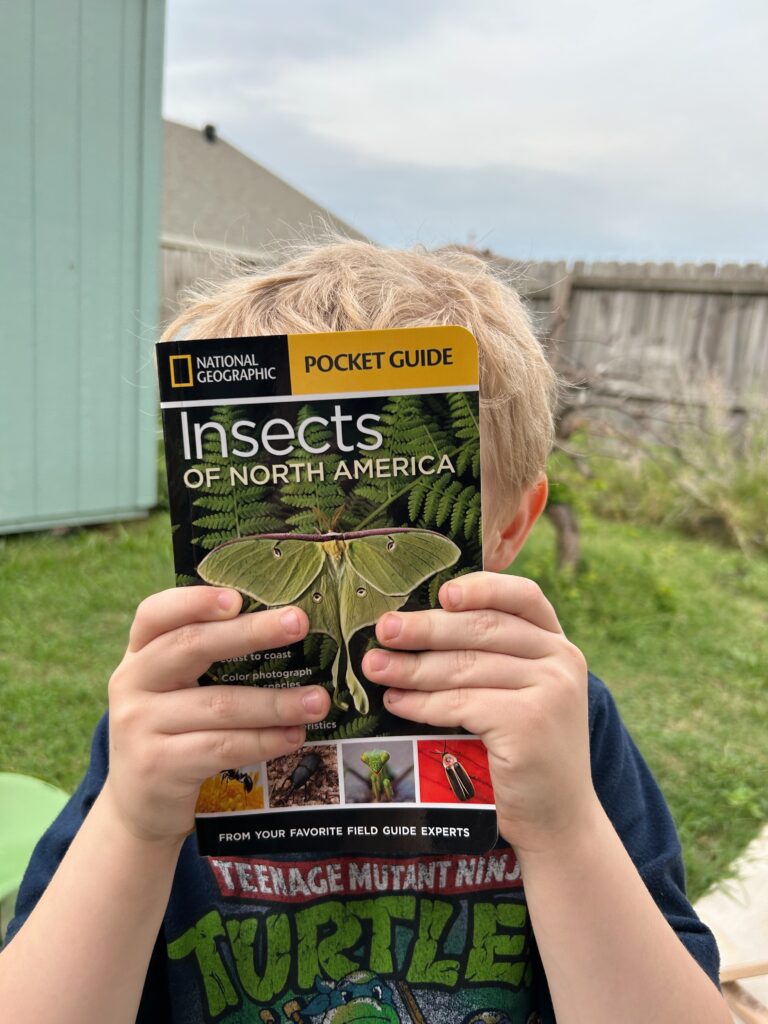
Insects of North America Pocket Guide
Gorgeous photos. Easy navigation. It holds a LOT considering it’s size.
So far we’ve found 2 bugs that weren’t included. Yellow Jacket we found in the dictionary. Milkweed Beetle we identified with iPhone’s visual look up feature.
Even if it doesn’t have every insect, it’s nice to have a physical book to flip through. I keep our field guides on the table each morning while we have breakfast outside.
No word of a lie – while I was typing this up David spotted a butterfly out the window I asked him what kind it was and he said – correctly, “Western Tiger Swallowtail.”
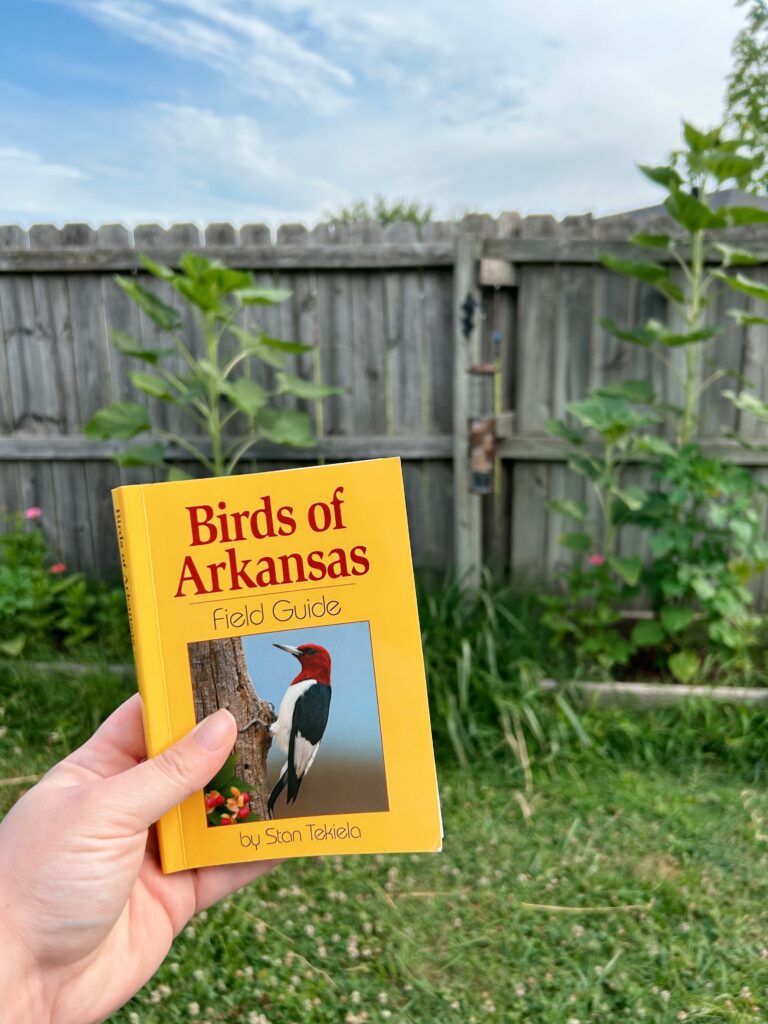
Again, beautiful photos. Color coded by the predominant color of the bird. I loved having an option that only included birds local to us. There is whole series of these.
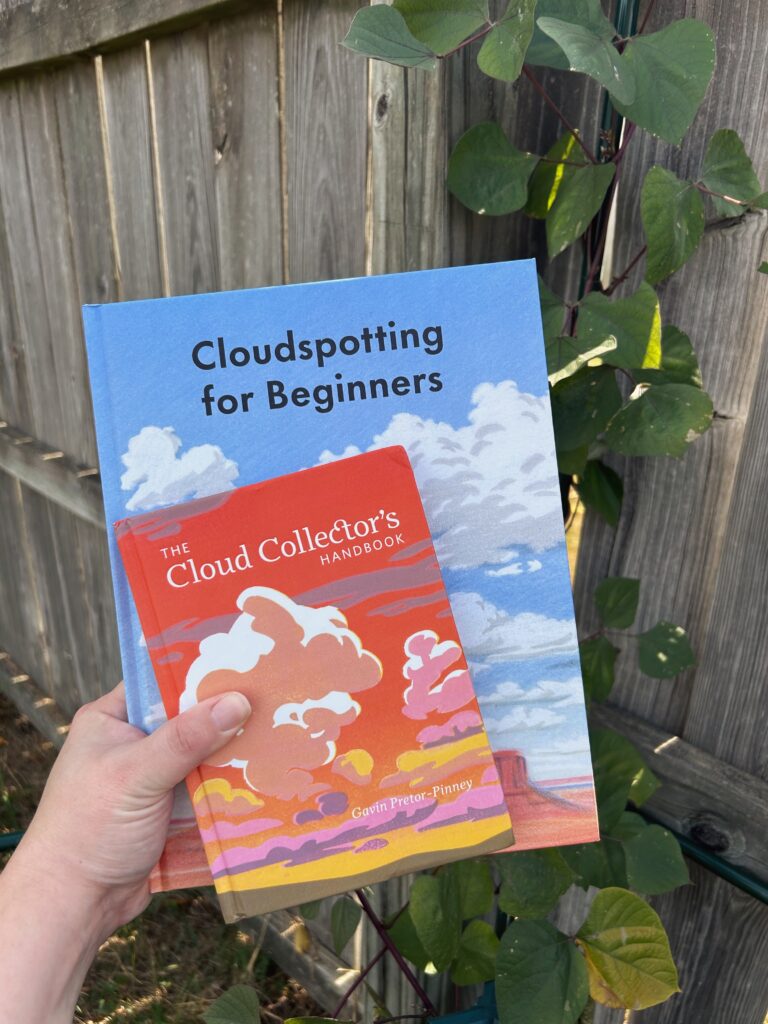
David’s been asking a lot of questions about clouds so I recently purchased Cloudspotting for Beginners and The Cloud Collectors Handbook.
Both were recommended by Austin Kleon. The smaller one has photographs and the larger one has colored pencil style illustrations (like the cover.)
For biology we are using (out of print) flapbook Usborne See Inside Your Body.
And of course the Magic School Bus books. (And these out of print unit study books.)
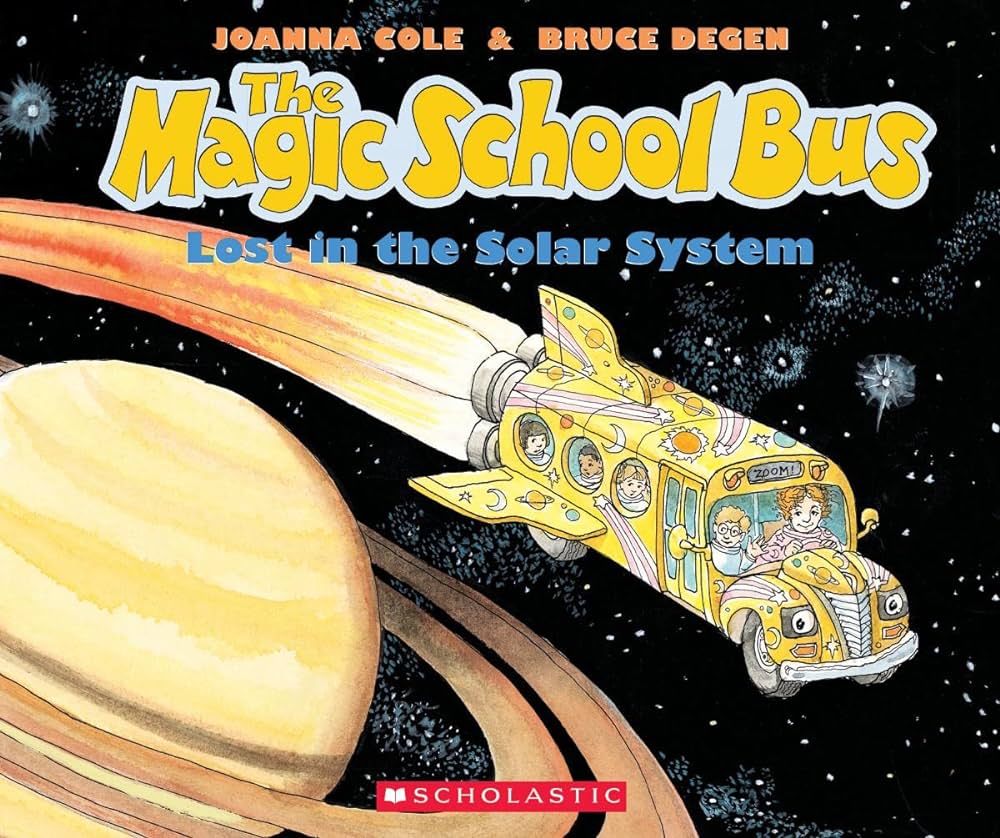
I’m also starting to save Science Experiment Ideas for all ages.
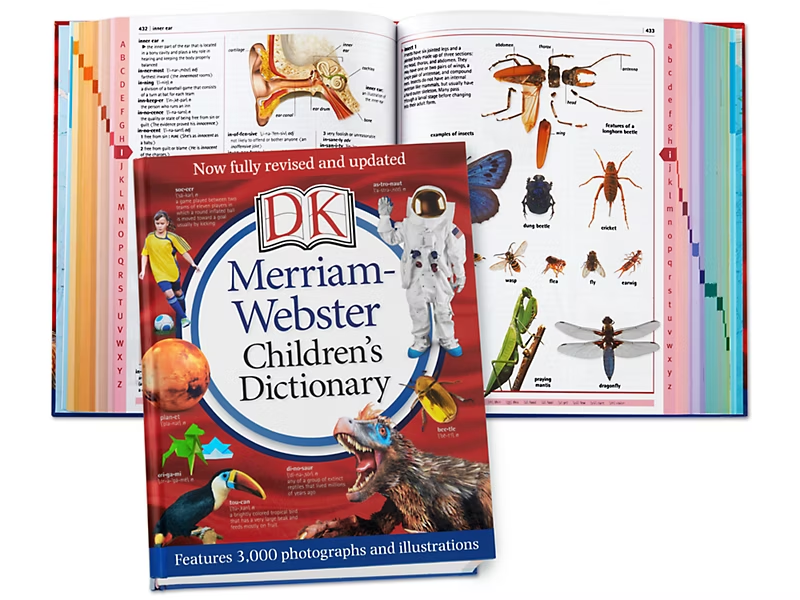
Webster’s Children’s Dictionary
Gorgeous full color photographs. Lovely to peruse and easy to look up definitions. Letters are color coded in rainbow order.
This also inspired me to buy my childhood dictionary, because it’s so nostalgic. This 80’s dictionary has fewer images, and they are all illustrations, but I love it. This book represents the beginning of my love affair with learning new words.
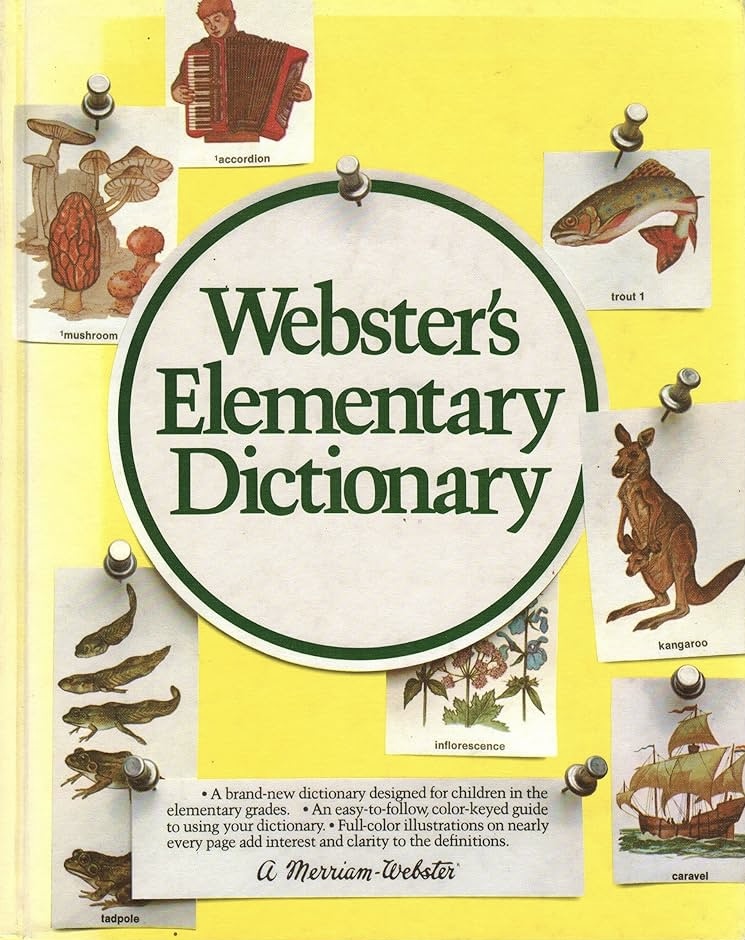
Language Games are really big for us as David has an asymmetrical experience with spoken language and reading.
We love these handwriting fonts to make our own printables with David’s name and the names of characters he loves. These are designed by a Canadian teacher. I love that these include right and left handed! Don’t miss the free printables.
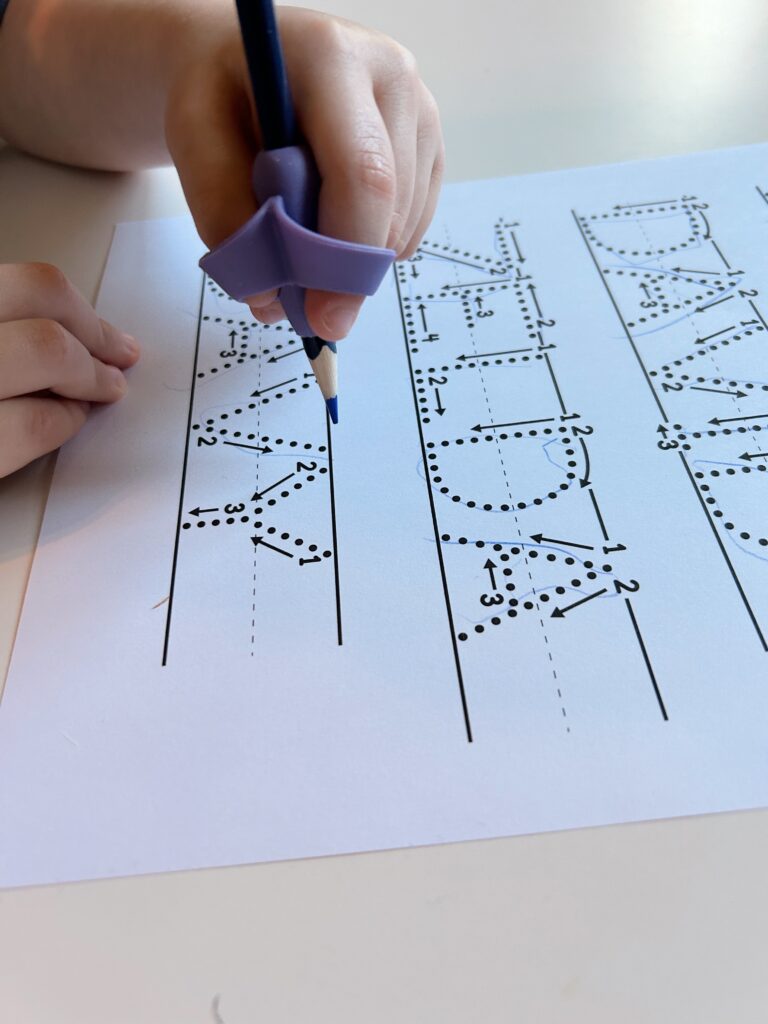
We have two different pencil grips. This one really tells all your fingers what to do. And this one is more of a gentle suggestion to open your web space.
We also use the iTrace handwriting app.
And a wipe off copy of Alphaprints Workbook (pictured at the top of this page.)
I’m also making notes ar Holistic Handwriting to document creative approaches to handwriting that overlap with art.
We’ve also added a magnetic poetry set recently for sentence building.
Not to mention tons and tons of picture books and early chapter books. We love reading together. Maybe I’ll write about those another time.
I wanted a book to introduce the concept of homeschool and was so pleased to find this one written from the perspective of a picture book author & artist who was home educated.
I’m including a few spreads just to give an idea of the style.
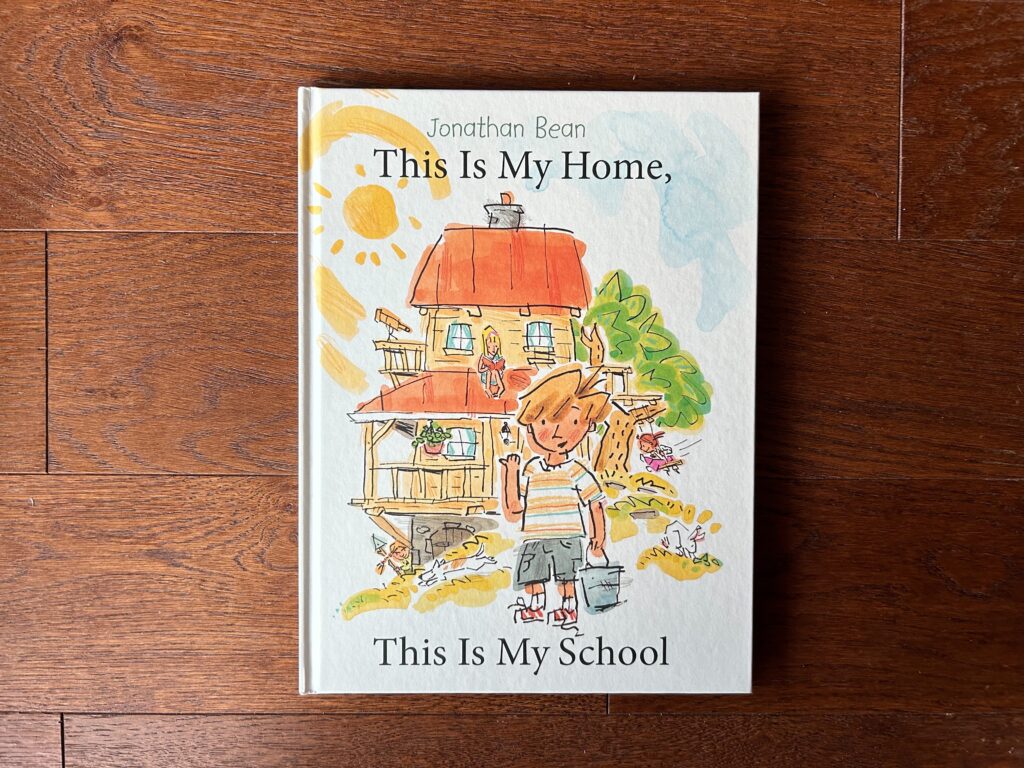
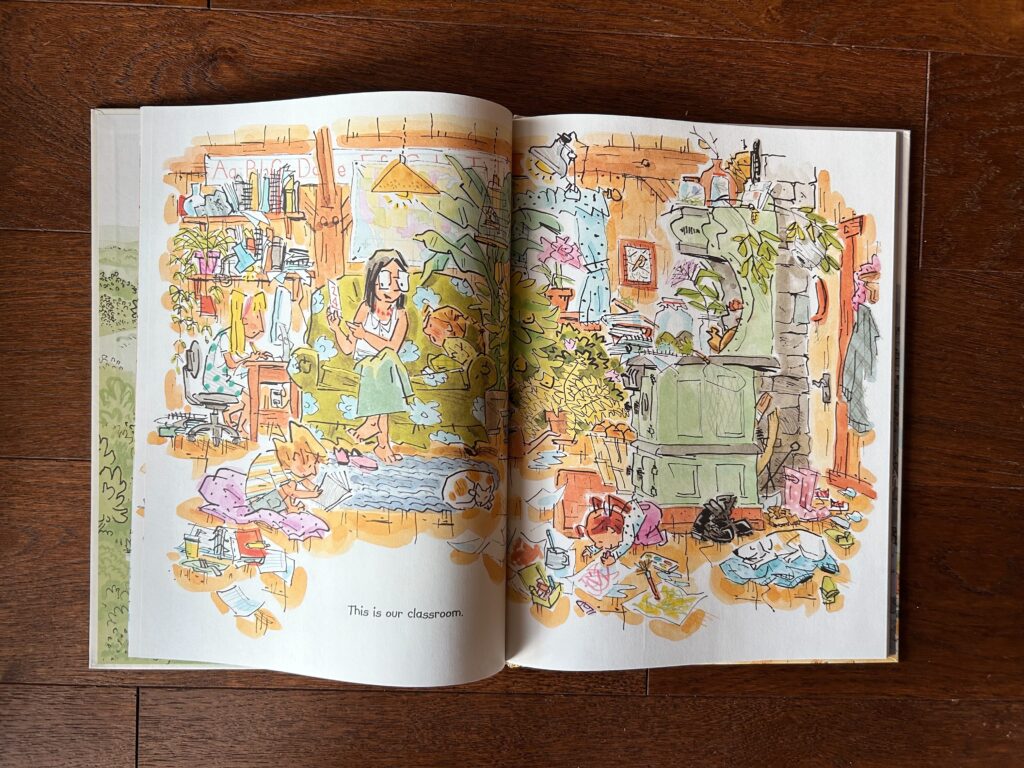
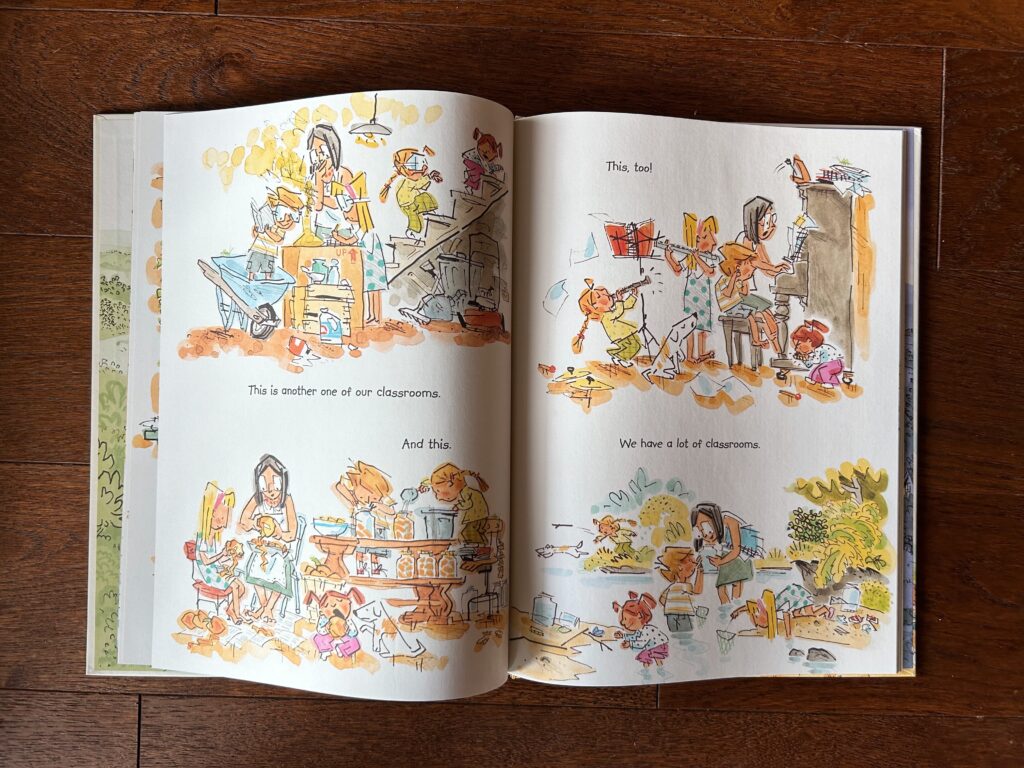
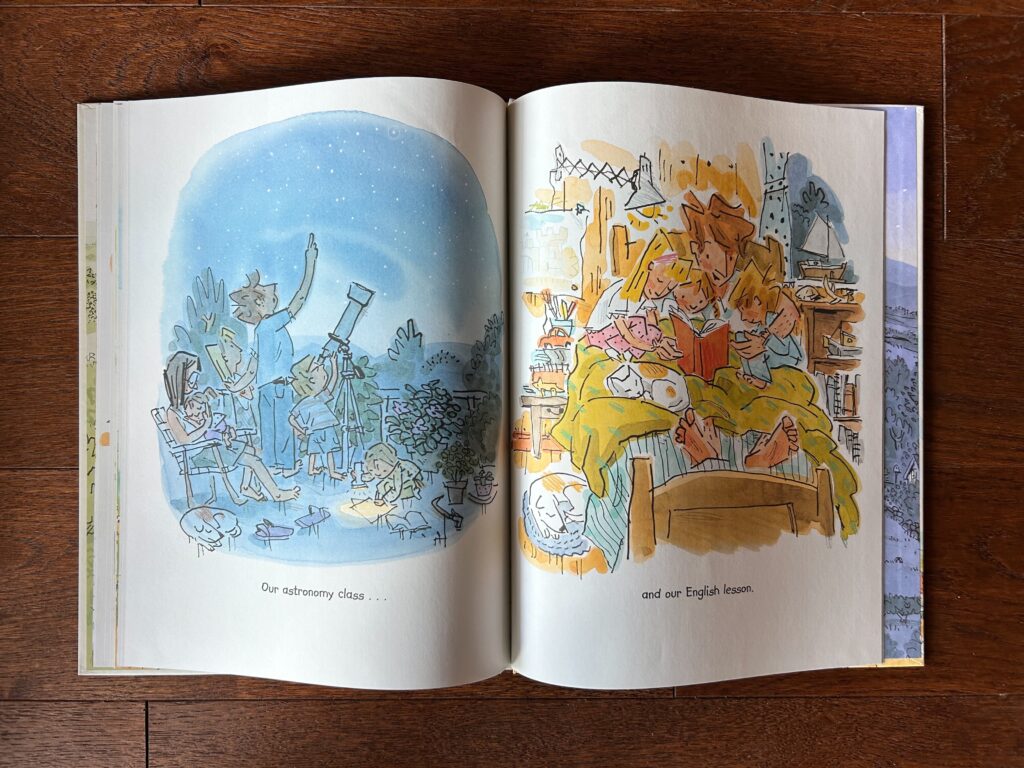
Davy’s reading above his grade level and he is loving Magic Tree House books. We read them together and he also listens to the audiobooks (with his Yoto Player) to fall asleep. These would be great to inspire unit studies and there are companion books (called Fact Trackers) about the historic setting of each adventure.
These books combine magic and history so if that’s not your thing this series is not for you.
I’ve taught art on and off since 2004. So I thought I’d share my favorite art supplies for kids. None of these are affiliate links.
Prang Watercolors have the most pigment of any student watercolors.
Crayola Crayons are worth paying extra for (for the same reason – there is nothing worse than a crayon that barely colors.)
Crayola Slick Sticks glide almost like oil pastels. I learned about them from Austin Kleon.
Stabilo Woody Pencils are similar with no plastic. I find they hold up better and are less apt to break. They’re expensive, but long lasting. I like drawing with them myself. You can also add water and use them like watercolor pencils. Or use them on wipe off booklets or windows.
Kitpas Block Crayons are also creamy and delightful. I got lost of questions about them when I made my post coming out as nonbinary and queer.
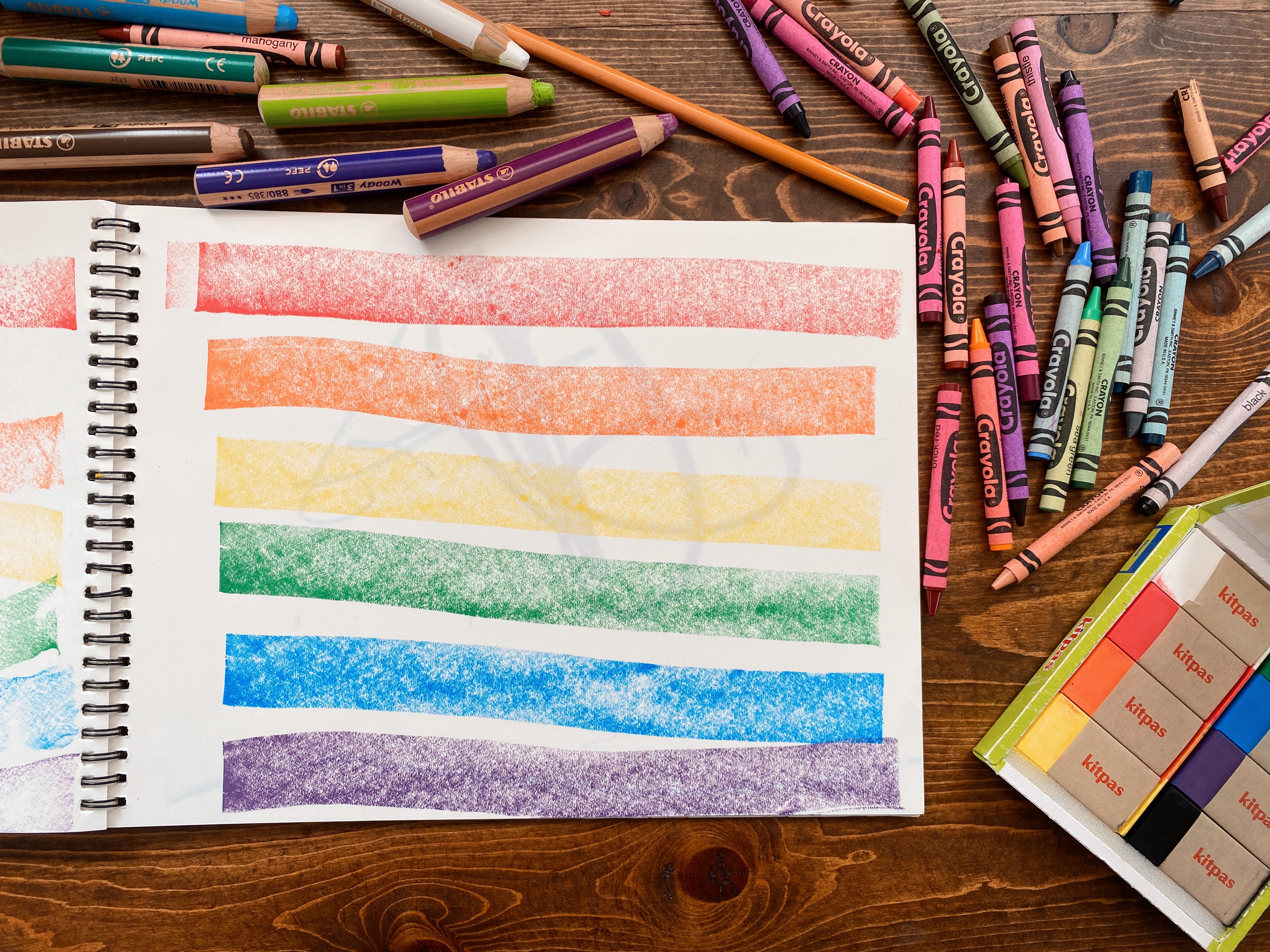
Canson Watercolor Paper is a great quality for the price and you can even find it at Walmart. Their mixed media paper is also good. The thickness really does matter for watercolor painting – thin paper will wrinkle up.
For day to day drawing we use Melissa & Doug’s sketchpad or a roll of IKEA paper. But for pencil and crayon pretty much anything you have on hand will work fine – recycling cardboard and cereal boxes can be great for crayon and markers.
Food Play board book of very simple food prep and activities by Amy Palanjian (she also shares tons of recipes for free on her blog and IG and has a flexible meal plan that we subscribe to.)
De Colores a beautiful board book with lyrics to this song.
Everything Grows another lovely book with lyrics to this song by Raffi. This has diverse representation in the illustrations. The lyrics are structured around a gender binary (boys & girls, brothers & sisters). I still love it.
This whole series is great. We also love Baby Beluga.
Little Prodigies Podcast is really fun to sing along to in the car.
Am still researching language options.
Considering gestalt language processing I’m looking into the audio lingual method. I want to prioritize learning phrases and songs (versus vocabulary and grammar conjugation.)
Saving this sample lesson to try.
More resources and more
Free printable curriculum from University of Oregon
We tried minimal screentime for a long time, but when I started including more videos & apps Davy’s spoken language exploded. (We are both autistic and he was late to speak.) I am very selective with the apps we use. Here are some of our favorites.
I often prefer to pay for apps because they don’t have ads. I’m not including any apps that constantly ask for upgrades or unlocking new content.
There’s a Monster at the End of This Book
Prodigies Bells (Free! There’s a very cool game called Pitch Quiz that would be great for all ages.)
Sesame Street defies category, but one of the reasons we love it is clips from classic Sesame Street including the songs Nathan & I grew up with. There are also games and clips from new shows. But no full episodes.
Little Mouse’s Encyclopedia (Free & paid versions. A little mouse explores ecosystems. Lovely illustrations. Gentle music.)
Barefoot Books Atlas App David loves the flag matching game. He knows African countries better than I do now. (There’s also a book version I just found and ordered used for $5.)
Numberblocks (Based on the UK show. A paid app and worth every penny. David has used this app to teach himself multiplication and other advanced math concepts in self directed play. There are games as well as clips from the show.)
We made Numberblock counting beads with pony beads and pipecleaners that we are now using to learn about currency.
Khan Kids (Free! This one is new to us and includes math and reading. You choose the grade level Pre K – 2nd grade.)
Monument Valley This is a beautifully designed puzzle game designed for adults, but David loves it. It has an M.C. Escher inspired style and could tie in well with an art history lesson.
Polygrams Tangrams & a slow paced TETRIS style puzzle game. Muted color palette. No timer.
David is outgrowing these, but at 3-4 he loved…
Colorblocks (Similar to the Numberblocks app, but for colors.)
There are lots of reasons TV is a great educational resource for autistic kids. It’s multi media (visual, auditory). You can turn on the captions. Professional actors are dynamic and engaging (this is especially helpful for late talkers with gestalt language processing.) Kids can watch the same thing over and OVER to absorb the material.
That said, I’m pretty discerning about what we watch. Mostly so I don’t end up overstimulated myself. And also because David is likely to echo or mimic nearly everything he sees (it’s a neurodivergent way of learning.)
Our favorite shows are:
Magic School Bus (Netflix)
Old and new versions – we love them all.

A very gentle show that teaches both social skills and nature. It’s by the BBC so it has a gentle musical score and narration.

We love almost everything by the BBC better than American TV. 🤷
In the US these shows are on Netflix (although they don’t have all the episodes.)
There’s also Alpha Blocks, but Davy was an early reader so he never took to it.
Davy watches this mostly on the Sesame Street App because even when we did subscribe to HBO it doesn’t have all the archives.

It’s hard to find these episodes, but Nathan tracked some down on Internet Archive (and there are a few on Amazon and YouTube.) Sure, the live action is dated, but narrating picture books is timeless. Also, Levar Burton is a national treasure.
Before Davy could talk he would hum songs from Daniel Tiger as communication. I also find they are very useful to play before we do something new (go to the doctor, gymnastics class, etc.) For those who haven’t heard of Daniel Tiger – it’s an animated series inspired by Mr. Roger’s Neighborhood.
This is the first film Davy watched all the way through so it has a special place in my heart. Sometimes we watch in Japanese with English subtitles turned on. Watching favorite shows (the ones you’ve seen a million times and have memorized) can be a great tool for language immersion.

I’m mostly using a home brew approach (meaning I’m making my own curriculum from books and various resources), but we may weave in more traditional home ed materials for certain subjects.
For preschool we used Oak Meadow’s Seasons of Wonder – which is full of poems, songs, and crafts for each season. There’s still plenty here for us to weave in throughout elementary years.
Likewise we invested in a Montessori moveable alphabet when we were all in on Montessori. We’ve diversified our approach, but are still using that material for spelling, writing, and punctuation.
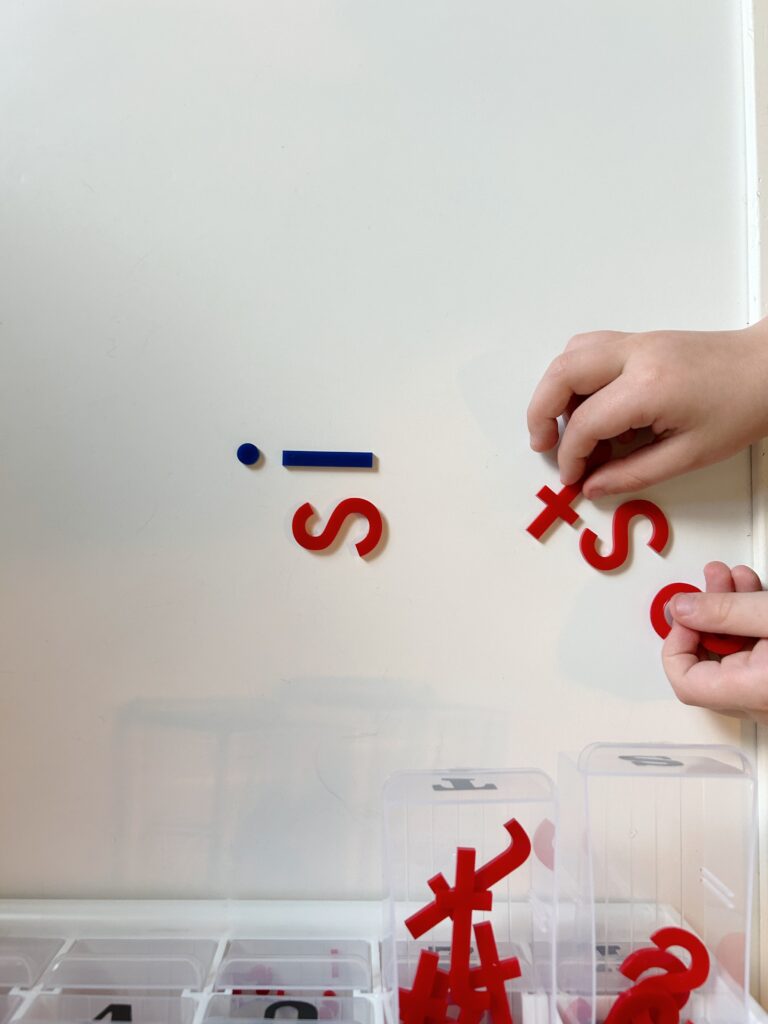
We are also trying out the free Language Arts curriculum from The Good & the Beautiful. It’s made up of illustrated workbook pages and they offer PDF versions for free.*
Heads up – this is a Christian curriculum, but from what I’ve seen so far it hasn’t proven to be overly religious. Your mileage may vary. You can also pay for printed materials if you prefer that to digital.
Prodigies Music Curriculum is the biggest financial investment we’ve made in home ed so far. We signed up for this before David was talking and singing “Do Do Do” and “Re Re Re” were some of his first voiced sounds. It’s an investment, but the quality is excellent and I believe is a great fit for neurodivergent brains.
You can start out with their free resources to try it out. If you don’t want the video lessons you could also buy a songbook and a set of bells from Amazon (that’s where we got ours – we painted them to match.) Or try their free app!